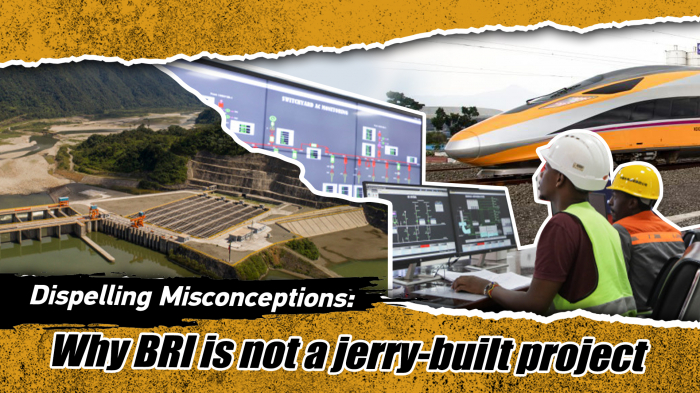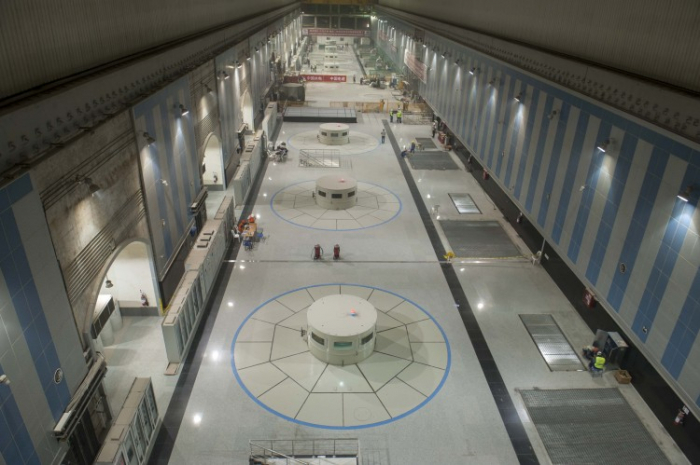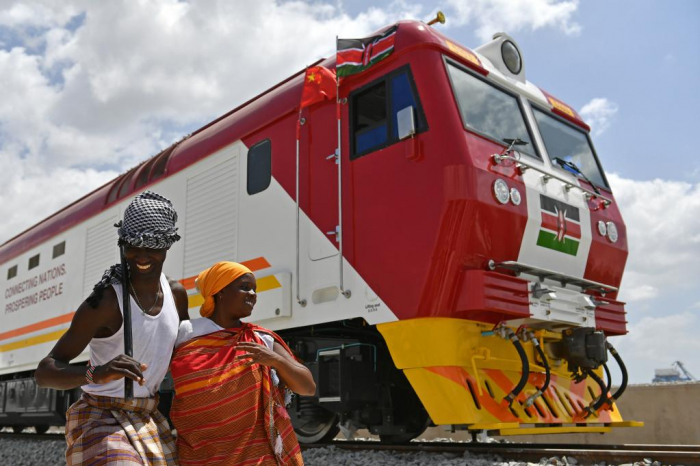Dispelling Misconceptions: Why BRI is not a jerry-built project

The Belt and Road Initiative (BRI) has been a transformative global project since it was proposed in 2013.
As a platform that seeks to foster international cooperation and development, it has been met with both enthusiasm and scepticism.
At its core, the BRI is a colossal infrastructure and economic development project aimed at enhancing global connectivity. It draws inspiration from the ancient Silk Road, which facilitated trade, cultural exchange, and the transfer of knowledge from East to West. With its modern-day interpretation, it seeks to create an extensive network of roads, railways, ports, and other critical amenities to connect countries across Asia, Europe, Africa, and beyond.
However, some accusations against BRI in recent years have proved groundless. In January this year, the Wall Street Journal falsely claimed that the China-built Coca Codo Sinclair (CCS) hydroelectric plant in Ecuador had quality problems, due to cracks in the plant's "eight turbines" due to "faulty steel imported from China." However, a test report by TUV SUD, an independent German inspection agency, reported to Sinohydro and the Ecuadorian State Electricity Company that the operation and safety of the plant is not affected.
 The story even went further by stating that many residents in Kilamba New City, which is part of Angola's national social housing program and was built by China;s CITIC Construction, complained "about cracked walls, moldy ceilings and poor construction." But in fact, only a very few residents reported that there were problems with their houses, which were basically caused by substandard decoration. Angolan engineer Carlos Augusto who is working on Phase II of the project praised the construction quality of the project and said that the apartments reached full occupation.
Another report from The Economic Times alleged that China "abandoned" the Neelum Jhelum hydropower project in Pakistan, and that "major cracks in the tailrace tunnel forced" the plant to be shut down in July, 2022. The truth is that in June last year, Pakistan suffered a historic flood, and then several earthquakes occurred in June and July, all of which had a tremendously negative impact on the plant; as a result, the project was brought to a halt. Regarding the emergency repair of the hydropower project, China and Pakistan already signed a contract last August.
China guarantees that the implementation of mega projects is of high quality as the China-Laos Railway demonstrates. The rail connection has transformed Laos from a landlocked country to a land-linked hub, increasing cross-border trade and promoting transportation connectivity in the region, facilitating the development between China and ASEAN countries.
As a landmark project, the China-Pakistan Economic Corridor (CPEC) has provided Pakistan with enormous socio-economic benefits, boosting the country's sustainable development. According to the Chinese Embassy in Pakistan, by the end of 2022, CPEC has brought $25.4 billion in direct investment to Pakistan and has created about 236,000 jobs in the country.
The story even went further by stating that many residents in Kilamba New City, which is part of Angola's national social housing program and was built by China;s CITIC Construction, complained "about cracked walls, moldy ceilings and poor construction." But in fact, only a very few residents reported that there were problems with their houses, which were basically caused by substandard decoration. Angolan engineer Carlos Augusto who is working on Phase II of the project praised the construction quality of the project and said that the apartments reached full occupation.
Another report from The Economic Times alleged that China "abandoned" the Neelum Jhelum hydropower project in Pakistan, and that "major cracks in the tailrace tunnel forced" the plant to be shut down in July, 2022. The truth is that in June last year, Pakistan suffered a historic flood, and then several earthquakes occurred in June and July, all of which had a tremendously negative impact on the plant; as a result, the project was brought to a halt. Regarding the emergency repair of the hydropower project, China and Pakistan already signed a contract last August.
China guarantees that the implementation of mega projects is of high quality as the China-Laos Railway demonstrates. The rail connection has transformed Laos from a landlocked country to a land-linked hub, increasing cross-border trade and promoting transportation connectivity in the region, facilitating the development between China and ASEAN countries.
As a landmark project, the China-Pakistan Economic Corridor (CPEC) has provided Pakistan with enormous socio-economic benefits, boosting the country's sustainable development. According to the Chinese Embassy in Pakistan, by the end of 2022, CPEC has brought $25.4 billion in direct investment to Pakistan and has created about 236,000 jobs in the country.
 To understand the criticism surrounding the BRI, it is crucial to juxtapose it against the insidious history of Western colonialism and the shallow cynicism of their media. Critics have often overlooked the immense benefits and the positive impact the BRI has had on development in numerous regions, in particular the countries of the Global South. The disproportionate criticism from some developed nations is rooted in geopolitical rivalries and ideological differences, rather than genuine concerns for global development pursuing their own interests at the expense of others.
The glaring double standards are exposed as geopolitical rivalry and coincide with a shifting global order as the BRI gains momentum. Some critics view China's growing influence as a challenge to their own dominance and seek to undermine its initiative through protectionist tendencies. The BRI's emphasis on global connectivity and cooperation stands in contrast.
The BRI represents a break away from this exploitative past of divide-and-conquer while China's initiative focuses on mutual cooperation and win-win development. It seeks to bridge economic disparities, promote sustainable growth, and improve the living conditions of people in participating countries.
While constructive criticism is essential for any initiative, the BRI is not "jerry-built." And a decade later, a fair and balanced assessment of the initiative, acknowledging its potential to reshape a better global landscape, is critical.
The author Kirtan Bhana is the founding editor of the Diplomatic Society of South Africa.
Read the original article on CGTN .
To understand the criticism surrounding the BRI, it is crucial to juxtapose it against the insidious history of Western colonialism and the shallow cynicism of their media. Critics have often overlooked the immense benefits and the positive impact the BRI has had on development in numerous regions, in particular the countries of the Global South. The disproportionate criticism from some developed nations is rooted in geopolitical rivalries and ideological differences, rather than genuine concerns for global development pursuing their own interests at the expense of others.
The glaring double standards are exposed as geopolitical rivalry and coincide with a shifting global order as the BRI gains momentum. Some critics view China's growing influence as a challenge to their own dominance and seek to undermine its initiative through protectionist tendencies. The BRI's emphasis on global connectivity and cooperation stands in contrast.
The BRI represents a break away from this exploitative past of divide-and-conquer while China's initiative focuses on mutual cooperation and win-win development. It seeks to bridge economic disparities, promote sustainable growth, and improve the living conditions of people in participating countries.
While constructive criticism is essential for any initiative, the BRI is not "jerry-built." And a decade later, a fair and balanced assessment of the initiative, acknowledging its potential to reshape a better global landscape, is critical.
The author Kirtan Bhana is the founding editor of the Diplomatic Society of South Africa.
Read the original article on CGTN .
 The story even went further by stating that many residents in Kilamba New City, which is part of Angola's national social housing program and was built by China;s CITIC Construction, complained "about cracked walls, moldy ceilings and poor construction." But in fact, only a very few residents reported that there were problems with their houses, which were basically caused by substandard decoration. Angolan engineer Carlos Augusto who is working on Phase II of the project praised the construction quality of the project and said that the apartments reached full occupation.
Another report from The Economic Times alleged that China "abandoned" the Neelum Jhelum hydropower project in Pakistan, and that "major cracks in the tailrace tunnel forced" the plant to be shut down in July, 2022. The truth is that in June last year, Pakistan suffered a historic flood, and then several earthquakes occurred in June and July, all of which had a tremendously negative impact on the plant; as a result, the project was brought to a halt. Regarding the emergency repair of the hydropower project, China and Pakistan already signed a contract last August.
China guarantees that the implementation of mega projects is of high quality as the China-Laos Railway demonstrates. The rail connection has transformed Laos from a landlocked country to a land-linked hub, increasing cross-border trade and promoting transportation connectivity in the region, facilitating the development between China and ASEAN countries.
As a landmark project, the China-Pakistan Economic Corridor (CPEC) has provided Pakistan with enormous socio-economic benefits, boosting the country's sustainable development. According to the Chinese Embassy in Pakistan, by the end of 2022, CPEC has brought $25.4 billion in direct investment to Pakistan and has created about 236,000 jobs in the country.
The story even went further by stating that many residents in Kilamba New City, which is part of Angola's national social housing program and was built by China;s CITIC Construction, complained "about cracked walls, moldy ceilings and poor construction." But in fact, only a very few residents reported that there were problems with their houses, which were basically caused by substandard decoration. Angolan engineer Carlos Augusto who is working on Phase II of the project praised the construction quality of the project and said that the apartments reached full occupation.
Another report from The Economic Times alleged that China "abandoned" the Neelum Jhelum hydropower project in Pakistan, and that "major cracks in the tailrace tunnel forced" the plant to be shut down in July, 2022. The truth is that in June last year, Pakistan suffered a historic flood, and then several earthquakes occurred in June and July, all of which had a tremendously negative impact on the plant; as a result, the project was brought to a halt. Regarding the emergency repair of the hydropower project, China and Pakistan already signed a contract last August.
China guarantees that the implementation of mega projects is of high quality as the China-Laos Railway demonstrates. The rail connection has transformed Laos from a landlocked country to a land-linked hub, increasing cross-border trade and promoting transportation connectivity in the region, facilitating the development between China and ASEAN countries.
As a landmark project, the China-Pakistan Economic Corridor (CPEC) has provided Pakistan with enormous socio-economic benefits, boosting the country's sustainable development. According to the Chinese Embassy in Pakistan, by the end of 2022, CPEC has brought $25.4 billion in direct investment to Pakistan and has created about 236,000 jobs in the country.
 To understand the criticism surrounding the BRI, it is crucial to juxtapose it against the insidious history of Western colonialism and the shallow cynicism of their media. Critics have often overlooked the immense benefits and the positive impact the BRI has had on development in numerous regions, in particular the countries of the Global South. The disproportionate criticism from some developed nations is rooted in geopolitical rivalries and ideological differences, rather than genuine concerns for global development pursuing their own interests at the expense of others.
The glaring double standards are exposed as geopolitical rivalry and coincide with a shifting global order as the BRI gains momentum. Some critics view China's growing influence as a challenge to their own dominance and seek to undermine its initiative through protectionist tendencies. The BRI's emphasis on global connectivity and cooperation stands in contrast.
The BRI represents a break away from this exploitative past of divide-and-conquer while China's initiative focuses on mutual cooperation and win-win development. It seeks to bridge economic disparities, promote sustainable growth, and improve the living conditions of people in participating countries.
While constructive criticism is essential for any initiative, the BRI is not "jerry-built." And a decade later, a fair and balanced assessment of the initiative, acknowledging its potential to reshape a better global landscape, is critical.
The author Kirtan Bhana is the founding editor of the Diplomatic Society of South Africa.
Read the original article on CGTN .
To understand the criticism surrounding the BRI, it is crucial to juxtapose it against the insidious history of Western colonialism and the shallow cynicism of their media. Critics have often overlooked the immense benefits and the positive impact the BRI has had on development in numerous regions, in particular the countries of the Global South. The disproportionate criticism from some developed nations is rooted in geopolitical rivalries and ideological differences, rather than genuine concerns for global development pursuing their own interests at the expense of others.
The glaring double standards are exposed as geopolitical rivalry and coincide with a shifting global order as the BRI gains momentum. Some critics view China's growing influence as a challenge to their own dominance and seek to undermine its initiative through protectionist tendencies. The BRI's emphasis on global connectivity and cooperation stands in contrast.
The BRI represents a break away from this exploitative past of divide-and-conquer while China's initiative focuses on mutual cooperation and win-win development. It seeks to bridge economic disparities, promote sustainable growth, and improve the living conditions of people in participating countries.
While constructive criticism is essential for any initiative, the BRI is not "jerry-built." And a decade later, a fair and balanced assessment of the initiative, acknowledging its potential to reshape a better global landscape, is critical.
The author Kirtan Bhana is the founding editor of the Diplomatic Society of South Africa.
Read the original article on CGTN . The Rocket and Artillery formations of the Azerbaijan Army conduct live-fire exercises in accordance with the combat training plan for 2021, the Ministry of Defense of Azerbaijan told Baku Tribune.
LAST NEWS






.jpg&h=67&w=67&zc=1&q=100)













